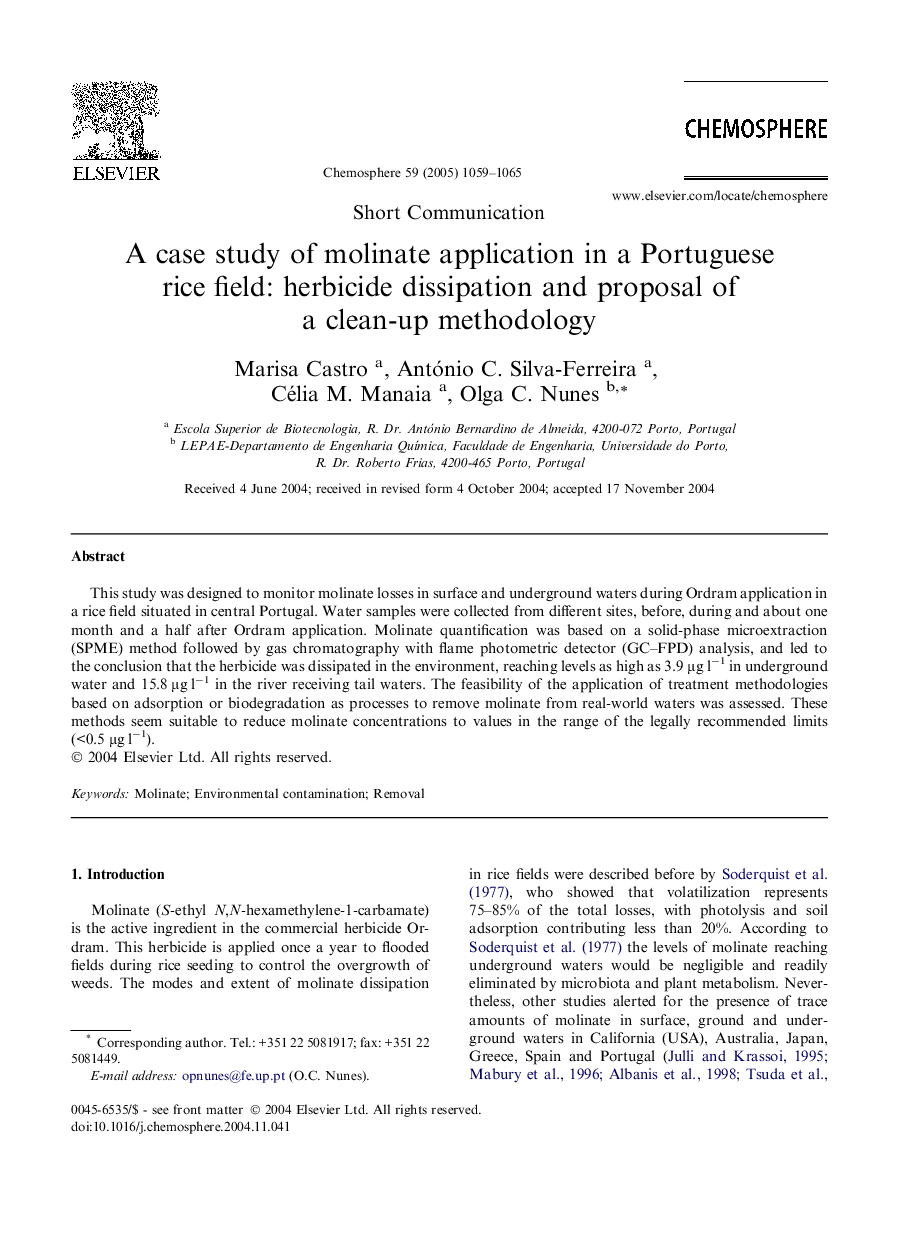| Article ID | Journal | Published Year | Pages | File Type |
|---|---|---|---|---|
| 9451884 | Chemosphere | 2005 | 7 Pages |
Abstract
This study was designed to monitor molinate losses in surface and underground waters during Ordram application in a rice field situated in central Portugal. Water samples were collected from different sites, before, during and about one month and a half after Ordram application. Molinate quantification was based on a solid-phase microextraction (SPME) method followed by gas chromatography with flame photometric detector (GC-FPD) analysis, and led to the conclusion that the herbicide was dissipated in the environment, reaching levels as high as 3.9 μg lâ1 in underground water and 15.8 μg lâ1 in the river receiving tail waters. The feasibility of the application of treatment methodologies based on adsorption or biodegradation as processes to remove molinate from real-world waters was assessed. These methods seem suitable to reduce molinate concentrations to values in the range of the legally recommended limits (<0.5 μg lâ1).
Related Topics
Life Sciences
Environmental Science
Environmental Chemistry
Authors
Marisa Castro, António C. Silva-Ferreira, Célia M. Manaia, Olga C. Nunes,
